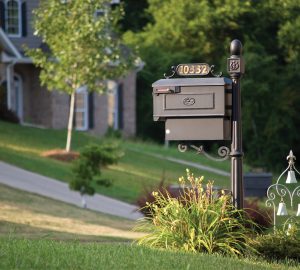Anyone who’s eaten a tomato fresh from the vine knows how rewarding gardening can be. But so many things can go wrong that it’s easy to get discouraged. To help keep that green thumb green, we got advice from Chip Tynan, manager of the Missouri Botanical Garden’s Horticultural Answer Service.
 branch out | Try vegetables you can’t easily find in the store or farmers market—that’s part of the fun of gardening, says Tynan. If you’re gaga for tomatoes, for example, grow a new-to-you variety—there are thousands out there!
branch out | Try vegetables you can’t easily find in the store or farmers market—that’s part of the fun of gardening, says Tynan. If you’re gaga for tomatoes, for example, grow a new-to-you variety—there are thousands out there!
necessary ingredients | Plants need six-plus hours of sun and soil with good drainage and adequate nutrients. To ensure the latter, get a soil test. This tells you which nutrients are missing and also provides a reference point if problems pop up.
early to rise | Watering in the morning is usually best—this gives leaves time to dry before nightfall, helping plants avoid fungal diseases. If this won’t work with your schedule, water carefully later in the day, and avoid wetting the leaves.
for the sun-deficient | If your garden does not get a lot of full sun, try leafy greens and bush beans, which can do fine with just a few hours.
 know the enemy | Learn to differentiate between good and bad insects and how to identify and remove the eggs of pests, which often latch onto the undersides of leaves. Flowers grown near your vegetables can help attract beneficial insects that feed on pests.
know the enemy | Learn to differentiate between good and bad insects and how to identify and remove the eggs of pests, which often latch onto the undersides of leaves. Flowers grown near your vegetables can help attract beneficial insects that feed on pests.
a year-round delight | Don’t forget there are many things that grow in the cooler months of spring and fall. Two cool-weather favorites are lettuce and broccoli.
 a work in progress | Consider your soil a lifelong project. Annually apply organic composts to replenish organic matter. During the growing season, cover soil with organic mulch. If your soil becomes nutritionally deficient, skip a year or two, plant cover crops or green manures and till them under.
a work in progress | Consider your soil a lifelong project. Annually apply organic composts to replenish organic matter. During the growing season, cover soil with organic mulch. If your soil becomes nutritionally deficient, skip a year or two, plant cover crops or green manures and till them under.
go natural | Avoid pesticides as much as possible. If you must spray, use the least toxic material available, such as insecticidal soaps and oils.
contain it | Another option if you don’t have a large sunny spot: containers. Make sure the pot is at least 12 inches in diameter for smaller plants (such as herbs) and 20 inches for larger plants (such as tomatoes).
 water by feel | Signs of overwatering: a wilting plant and damp soil. Signs of underwatering: a wilting plant and dry soil. Some vegetables, such as tomatoes, wilt in the heat, even if the water level is consistently correct. Plants like this will recover by sunset or the next morning. The best way to gauge whether your plant needs water: stick your finger in the soil.
water by feel | Signs of overwatering: a wilting plant and damp soil. Signs of underwatering: a wilting plant and dry soil. Some vegetables, such as tomatoes, wilt in the heat, even if the water level is consistently correct. Plants like this will recover by sunset or the next morning. The best way to gauge whether your plant needs water: stick your finger in the soil.
be a garden traveler | Consider exploring the world of Asian vegetables. Tynan recommends greens in the mustard family that are ‘kissing cousins’ to broccoli and cabbage, such as bok choys, Chinese broccoli and mizuna. A great resource is Oakland-based Kitazawa Seed Company.
recommended resources:
>> Epic Tomatoes by Craig LeHoullier
>> Crockett’s Victory Garden by James Underwood Crockett
>> Missouri Botanical Garden’s Home Gardening Center, which includes a help desk, a plant doctor service and a reference library








